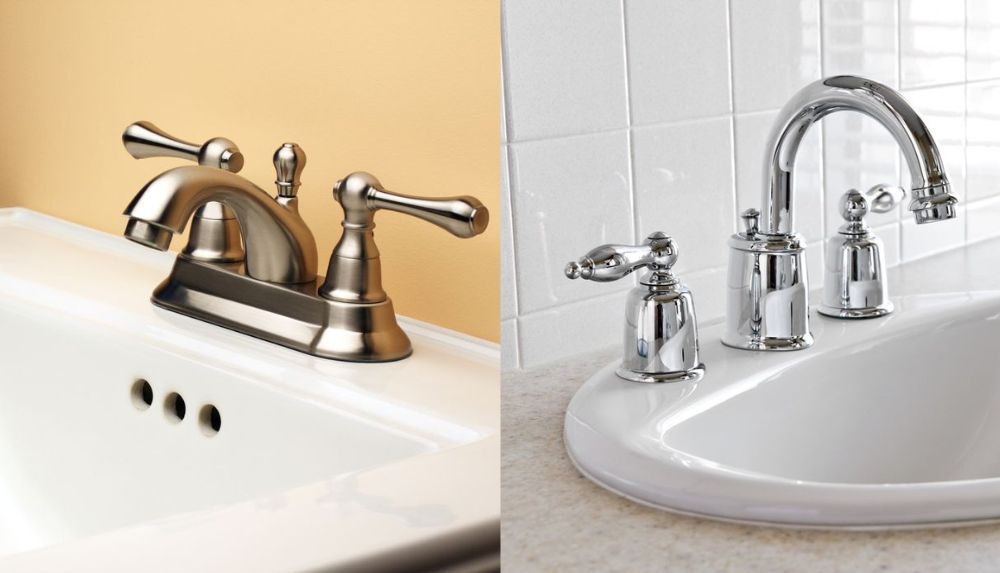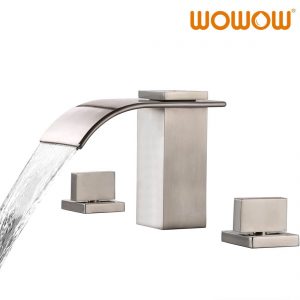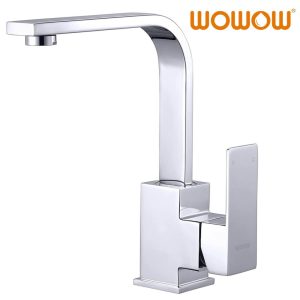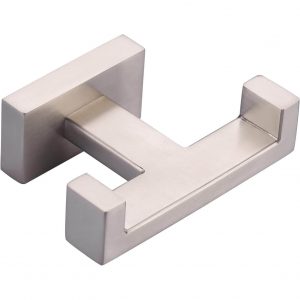Satin Nickel VS Stainless Steel: What Are The Differences
Views:923 classificationBlog classificationFaucet Knowledge

When it comes to choosing the right materials for various aspects of our homes, from kitchen appliances to bathroom fixtures, the finish is a crucial consideration. Two popular finishes that often come into play in home design are Satin Nickel and Stainless Steel. These finishes offer a sleek, modern aesthetic, but they have key differences that can impact your decision. In this article, we’ll explore the characteristics and differences between Satin Nickel and Stainless Steel to help you make an informed choice for your home.
Satin Nickel: A Classic Elegance
Satin Nickel is a finish that has been popular for decades, and it’s often associated with a classic and timeless elegance. This finish is achieved by applying a layer of nickel to a base metal, such as brass or zinc, and then brushing or sanding it to create a satin or brushed appearance. Satin Nickel is known for its warm, golden undertones that can give a cozy, inviting feel to a space.
One of the key advantages of Satin Nickel is its versatility. It can blend seamlessly with a variety of design styles, from traditional to contemporary. It’s a popular choice for cabinet hardware, light fixtures, faucets, and door handles. Satin Nickel is also relatively easy to maintain, as it doesn’t show fingerprints or water spots as prominently as some other finishes.
However, it’s essential to be aware that Satin Nickel can be more susceptible to wear and tear over time. The nickel layer can wear away, revealing the base metal beneath, which might not be as aesthetically pleasing. Regular cleaning and maintenance are necessary to preserve the finish’s appearance.
Stainless Steel: Modern and Durable
Stainless Steel is a material renowned for its sleek and contemporary appearance. It’s not a coating but a material in itself, composed primarily of iron, chromium, and other metals. Stainless Steel gets its name from its remarkable resistance to stains, corrosion, and rust. This makes it a particularly popular choice for kitchen appliances, sinks, faucets, and various other applications where durability and hygiene are essential.
One of the standout features of Stainless Steel is its durability. It can withstand the rigors of daily use and is incredibly resistant to scratches, stains, and heat. This makes it an excellent choice for high-traffic areas like the kitchen. Moreover, Stainless Steel’s neutral and reflective surface can help create a sense of spaciousness and cleanliness in a space.
While Stainless Steel offers numerous benefits, it does have some potential downsides. One of the main concerns is its cold, industrial aesthetic, which might not suit every design style or personal preference. It can sometimes feel sterile or unwelcoming in a home environment. Additionally, Stainless Steel is prone to displaying fingerprints, smudges, and water spots, which can require frequent cleaning to maintain its pristine appearance.
Key Differences:
- Aesthetic Appeal: Satin Nickel exudes a classic and warm aesthetic with golden undertones, while Stainless Steel offers a modern, sleek appearance that can feel somewhat cold and industrial.
- Durability: Stainless Steel is incredibly durable and resistant to scratches, stains, and corrosion, making it an excellent choice for high-traffic areas. Satin Nickel, on the other hand, is more susceptible to wear and tear and may require regular maintenance to preserve its appearance.
- Maintenance: Stainless Steel is relatively easy to clean but can show fingerprints and water spots. Satin Nickel is more forgiving in this regard and doesn’t display these imperfections as prominently.
- Versatility: Satin Nickel is versatile and can complement a range of design styles. Stainless Steel is often associated with modern and contemporary design.
- Cost: Satin Nickel is generally more affordable than Stainless Steel, making it a budget-friendly option for those looking to add a touch of elegance to their space.
- Application: Stainless Steel is commonly used for kitchen appliances, sinks, and faucets. Satin Nickel is popular for cabinet hardware, light fixtures, and bathroom accessories.
Choosing the Right Finish:
Your choice between Satin Nickel and Stainless Steel ultimately depends on your personal preferences, the design style of your home, and the specific application. Here are a few guidelines to help you make the right decision:
- Consider the Space: For a modern and sleek kitchen, Stainless Steel may be the ideal choice. If you want a warmer, classic look for your bathroom or living room, Satin Nickel could be the way to go.
- Maintenance: Think about how much time you’re willing to invest in cleaning and maintenance. If you want a low-maintenance finish, Stainless Steel might be more suitable.
- Budget: Consider your budget. Satin Nickel is often more affordable than Stainless Steel, making it a cost-effective option for many homeowners.
- Design Harmony: Ensure that your chosen finish harmonizes with the overall design of the space. You want the finish to complement, rather than clash with, your existing decor.
In conclusion, Satin Nickel and Stainless Steel are both excellent finishes that bring their unique characteristics to various home applications. By understanding their differences and considering your personal preferences, design style, and practical requirements, you can make an informed choice that enhances the aesthetics and functionality of your home. Whether you opt for the timeless elegance of Satin Nickel or the modern durability of Stainless Steel, both finishes have their place in creating a beautiful and functional living space.
 WEWE Kitchen Faucets
WEWE Kitchen Faucets



您好!please sign in